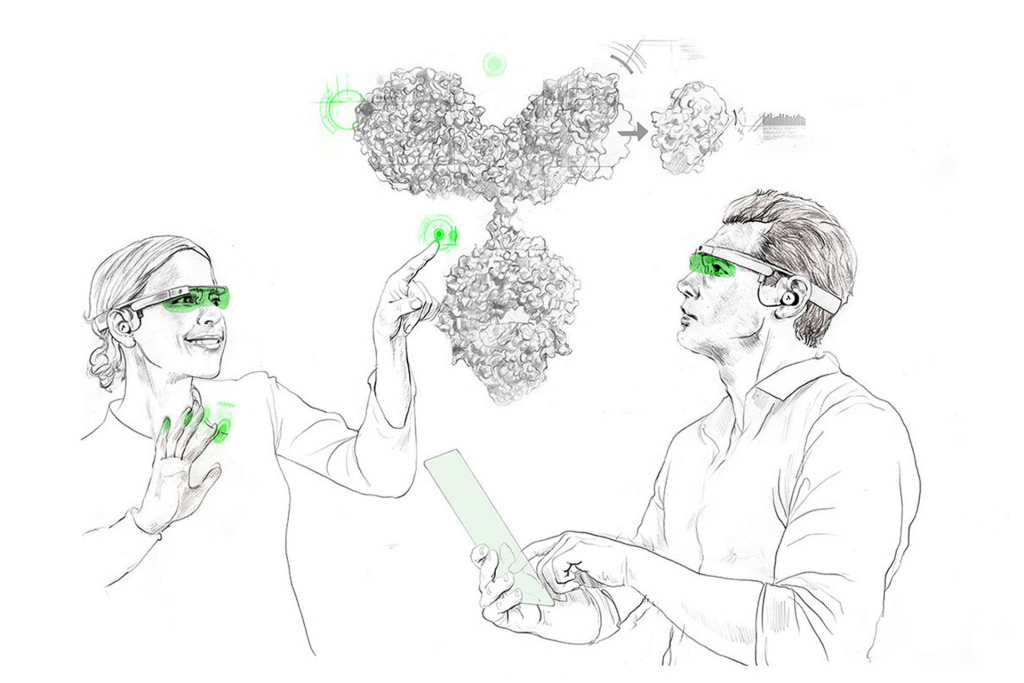Monoclonal antibody production is a complex, sensitive process that involves several intermingled aspects of biochemistry, molecular biology, cell biology and their respective intended field of application, e.g. medicine or biopharmaceutical manufacture.
Nonetheless, the zoo of marketed therapeutic monoclonal antibodies (mAbs) is large with 79 approved by the US Food and Drug Administration (FDA) in 2020, and the associated 100 billion dollar market is still growing.
This article will shed light on the challenges that accompany the development of antibody therapies.
First, we want to give an overview of the most successful and frequently used biotechnology methods for monoclonal antibody production.
Subscribe to our Newsletter
Get all the latest updates, and learn about our advancements in antibody production.
Subscribe now
Traditionally, since Köhler and Milstein developed the hybridoma technique in 1975, monoclonal antibodies are produced on commercial scale. The method involves the fusion of an immortal myeloma cell with a single antibody secreting B lymphocyte cells from mice to create a cell line and cell cultures producing monoclonal antibodies. As they are the offspring of one hybridoma cell, they are all specific for the same single epitope of an antigen.
This is in contrast to polyclonal antibodies which are derived from many different B cells, and while being antigen-specific, they bind several distinct epitopes of an antigen.
Hybridoma mAbs must be modified by chimerization or humanization to reduce immunogenicity related side effects when administered to patients.
Modern frequently employed techniques are:
Read more: How are monoclonal antibodies produced in the lab?
When using animals to generate neutralizing antibodies against an antigen, the latter necessarily must provoke an immune response to raise antibody producing B cells. Some antigens are inherently less immunogenic, especially naturally occuring proteins such as receptors and enzymes. Suitable approaches might be a switch to another species, or the design of antigens with added features to increase immunogenicity.
Another challenge is the use of antigens that are inherently toxic to the organism and attempted immunization leads to severe harmful effects. Switching to alternative species might alleviate the issue, but in vivo antibody generation generally proves problematic for toxic antigens.
Moreover, using antibodies from non-human animals always carries the risk of immunogenicity due to foreign traits of the peptide sequence and the associated side effects. Thus, chimerization and/or humanization is required during development.

Hybridoma production requires the immunization of an animal and subsequent fusion of myeloma cells and B lymphocytes:
The obtained hybridoma cells must be continuously validated because they are prone to mutations and could start to secrete undesired antibody variants.
A big advantage of the phage display method is that no laboratory animals are needed, when a phage library has already been established. A fundamental first antibody library can be obtained from blood donations from human donors and suitable antibodies be selected from the plethora of antibody sequences thus generated:
While the single use of a human donor for B cells circumvents the continuous need for laboratory animals and all related issues, it introduces a certain bias to the library, as due to variability between individuals.
Another challenge is the requirement for relatively large amounts of antigens that are immobilized on suitable surfaces for in vitro selection.
Single B cell technologies have the benefit of reduced risk for immunogenicity related side effects due to using human cells to generate antibody sequences:
Although this technology has major advantages, there are still a few challenges and bottlenecks: design of suitable primers for sequencing, antigen reagent design for labeling, and the configuration for sorting.
When looking at the advantages and applications of mAbs, it is easy to understand why the effort to develop them is worth it:
With 1,500 currently ongoing clinical trials in the United States alone3, the pharmaceutical research community and the key companies in the pharma sector clearly see high potential in developing monoclonal antibodies.
Antibody service providers such as evitria have a tremendous impact on pushing these developments further ahead and contribute their extensive experience in the expression of recombinant monoclonal antibodies in CHO cells. Learn more about evitrias cho cells antibody production.